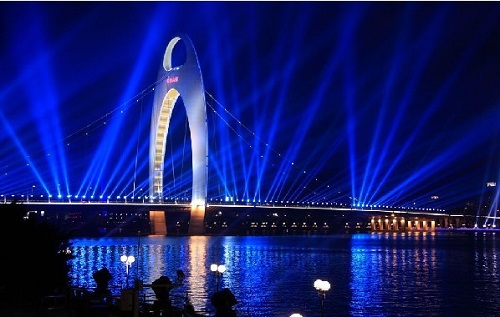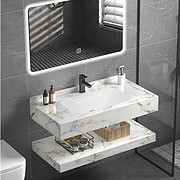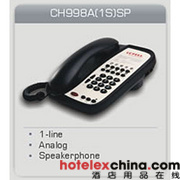
The group that oversees Bluetooth wireless standards has named a Philips manager to its board, underscoring the melding of lighting and the Internet of Things (IoT). The move is believed to signal the imminent arrival of a long awaited “mesh” standard that overcomes what has been Bluetooth's limited physical range, which has held back smart lighting applications.
Interested in articles & announcements on smart lighting & IoT?
The Kirkland, WA-based Bluetooth Special Interest Group (SIG) tapped Philips Lighting's Ruud van Bokhorst as an associate member to its board of directors. At Philips, Van Bokhorst manages the wireless networks program within the company's standards and regulations operations. The Bluetooth SIG also added Google wireless architect Martin Turon, who works on IoT platforms for Google and its home automation company, Nest Labs.
Bluetooth is one of the many wireless and wired technologies that Philips and other lighting vendors are increasingly using to connect lamps and luminaires to the Internet, making them “things” in IoT schemes. For example, in so-called indoor positioning systems (IPS), Bluetooth chips embedded in ceiling lights at a giant retail store can guide smartphone-equipped shoppers around a labyrinthine floor and offer them personalized discounts and information.
As Philips' Ruud van Bockhorst joins the board at the Bluetooth Special Interest Group, the lighting industry's long wait for a Bluetooth mesh standard could finally soon be over.
As Philips' Ruud van Bockhorst joins the board at the Bluetooth Special Interest Group, the lighting industry's long wait for a Bluetooth mesh standard could finally soon be over.
One of the knocks against Bluetooth has been that its signals travel only about 30 ft, which is not adequate in spacious retail settings. To overcome that restriction, lighting vendors and other Bluetooth system providers have been rigging together their own proprietary mesh topologies that allow one Bluetooth beacon to hand off to the next, effectively extending the signal's reach. But the absence of a mesh standard has, according to some smart lighting vendors, undermined end-user confidence and has thus limited market uptake.
Mesh up
The lighting industry had expected the Bluetooth SIG to ratify a standard a year or more ago. The appointment of Philips' van Bokhorst is a likely precursor to the standard's emergence as soon as this month, a development that LEDs Magazine flagged over two weeks ago. The SIG elected both van Bokhorst and Turon to two-year associates posts, which are shorter than the normal four-year term for more permanent members.
“The election reflects the current focus of Bluetooth, which now is clearly lighting and IoT, especially with the adoption of Mesh that is just around the corner,” Szymon Slupik, president of Bluetooth specialist Silvair, told LEDs today. Slupik is the chair of Bluetooth SIG's mesh working group.
Mark Powell, executive director of the Bluetooth SIG, hinted that a mesh standard could be imminent. In a press release praising van Bokhorst and Turon, he noted, “Their extensive technology, industry, and standards development experience will be incredibly valuable as Bluetooth prepares to add mesh networking capability, which holds the promise to accelerate the growth of new markets, such as building automation, sensor networks, and the industrial Internet of Things (IIoT).”
And the Bluetooth SIG prominently states on its website's homepage that “soon you'll be able to use Bluetooth mesh.” Bluetooth SIG has what it calls a subgroup working on mesh for professional lighting, headed by Robert Hick, vice president of engineering for lighting controls firm Leviton.
IPS marks just one of a wide range of possible uses for IoT lighting. Net connections give commercial and residential users greater control over LED lights, allowing remote changes to on/off, brightness, color, and color temperature. It also responds to room occupancy, motion, and climate, all of which can further improve the energy efficiency of a building. It can track goods, assets, and inventory. A key monetizing element is that it collects data, which commercial groups can use in a variety of ways. For instance, data analysis can reveal how to improve the layout of a store, or how to better make use of office space.
Technology versus Technology
Other technologies vying for a place at the IoT table include the wireless Wi-Fi, ZigBee, visible light communication (VLC) and its two-way version Li-Fi, Z-Wave, and NarrowBand IoT, as well as the wired Power over Ethernet. A lack of interoperability between them has held back progress. Efforts to introduce commonality include Thread and the recent IoT Ready Alliance.
Retailer-oriented IPS is expected to be one of the early main uses of IoT lighting. Recent pioneers include a Media Markt consumers electronics store in Eindhoven, the Netherlands, an EDEKA Paschmann supermarket in Dusseldorf, Germany and an E.Leclerc “hypermarket” in Langon, France.
For Philips, Bluetooth is playing a more pronounced role than it had in the company's IPS strategy. Philips had previously emphasized VLC for retail settings, but began also talking up Bluetooth earlier this year. VLC uses LED lightwaves rather than radio frequencies used by Bluetooth, and it does not work when lights are turned off during the daytime, as they can be in, say, a mall with ample natural light. VLC also requires a phone to constantly point at ceiling lights, whereas Bluetooth does not.
And compared to other wireless radios like ZigBee, Bluetooth is a potentially wise choice for IPS given that most smartphones include Bluetooth, whereas they do not include ZigBee (although a typical smartphone camera receives VLC's light signals).
But Bluetooth's range issues have presented challenges. That's one reason why Philips has chosen to embed ZigBee rather than Bluetooth communication chips in luminaires for the office environment, a different setting than retail. ZigBee's radio waves travel further than do Bluetooth's. And as Osram business development manager Mark Vermeulen noted recently, ZigBee grew up as building management technology (not necessarily with smartphones in mind), has been around for 15 years, and is stable.
All lighting companies are also wrestling with how to both compete against and cooperate with IT companies, many of which themselves are trying to sell smart chips and sensors to big commercial end users like retailers and offices, without necessarily embedding them in lighting systems. One lighting vendor, Osram, has even shown a willingness to sell standalone Bluetooth chips.
At the Bluetooth SIG, Philips and Google replace Plantronics and ARM as associate members. The seven permanent members are the founders: Ericsson, Nokia, Toshiba, Microsoft, Intel, Apple, and Lenovo (formerly Motorola). Two other associate members, AWOX and Polar, are a year into their two-year term. AWOX is a French firm specializing in connected home software, and Polar is a Swiss fitness gadget company.










Service Hotline
Work Time:Mon-Fri 9:00-18:00
UTC+8

Sinoexpo Digital Platform
Copyright 2006-2025 Shanghai Sinoexpo Informa Markets International Exhibition Co., Ltd. All rights reserved
沪ICP备05034851号-77
 沪公网安备 31010402000543号
沪公网安备 31010402000543号